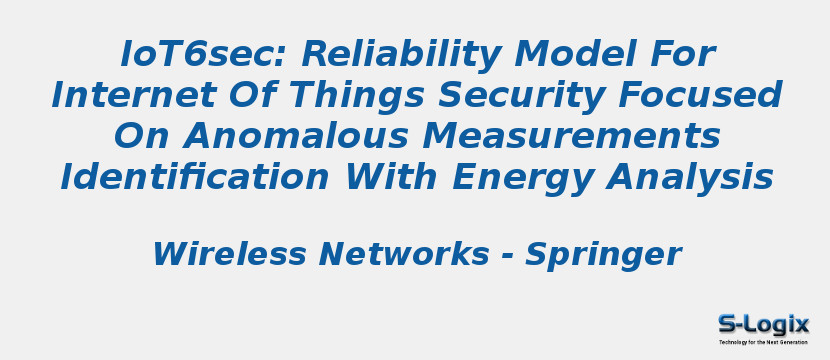Research Area: Internet of Things
Wireless sensor and actuator devices with direct IPv6 Internet access with no human interaction compose the IP-connected Internet of Things (IoT). These devices are resource constrained in processing, memory, and energy—battery operated. IoT devices can have various applications. Although, when directly connected to the Internet they are susceptible to threats (e.g., malicious tamper of packet content to reduce the reliability of device data, the flood of requisitions for the devices to drain their energy). In this way, the literature shows the use of end-to-end security to provide confidentiality, authenticity, and integrity of IoT devices data. However, even with the benefit of secure IoT data, they are not enough to ensure reliable measurements. For this reason, this work presents a reliability model for IoT, focused on the identification of anomalous measurements (using multivariate statistics). In the experiments, we use spatial (proximity) and temporal (time interval variation) correlation, and datasets with true and false data. Additionally, we use an end-to-end secure scenario and analysis of energy consumption. The results prove the feasibility of the triad: reliability (within a system that identifies the type of the anomalous measurements), security, and low energy consumption.
Keywords:
Author(s) Name: Norisvaldo Ferraz Junior,Anderson Silva,Sergio Takeo Kofuji
Journal name: Wireless Networks
Conferrence name:
Publisher name: Springer
DOI: 10.1007/s11276-017-1610-2
Volume Information: volume 25, pages 1533–1556 (2019)
